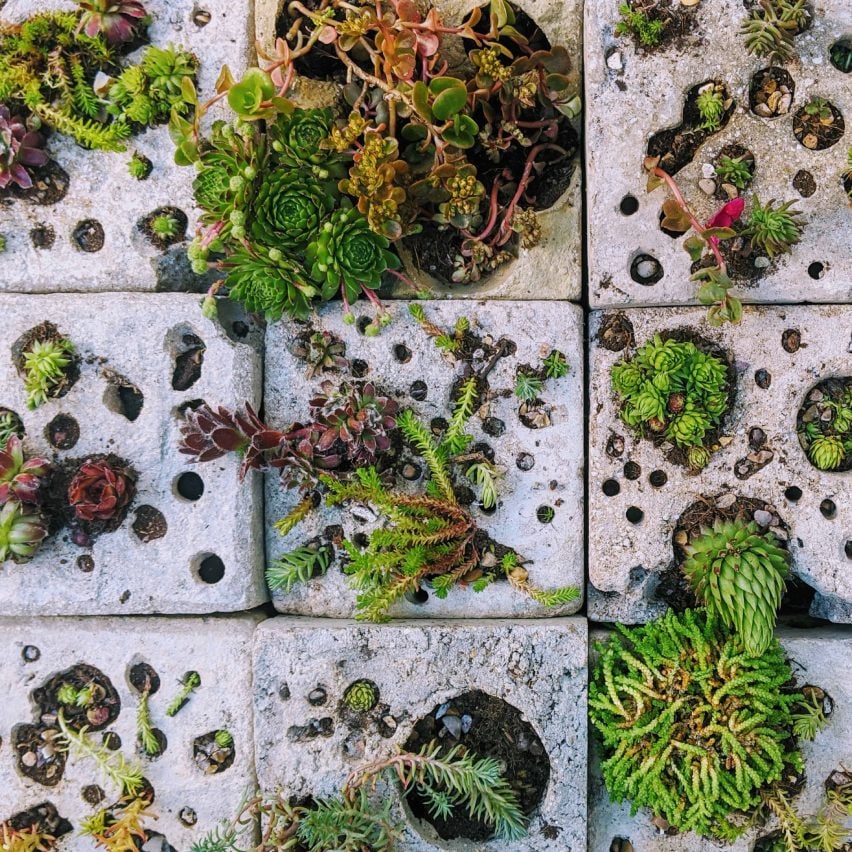
Building blocks that support biodiversity and a textile homage to cold-water swimming feature in this roundup of work from 2020 design graduates, which is being presented at VDF by the New Designers student showcase.
The annual exhibition, which is described by organisers as "the UK's largest design graduate show", was set to feature the final projects of more than 3,000 students from a range of disciplines and universities.
But with the physical event called off due to the ongoing coronavirus pandemic, New Designers is showcasing their work digitally this year.
From this vast pool of projects, 20 are being highlighted here at the Virtual Design Festival across the four unifying themes of nature, gender, sustainability and bold, geometric prints.
In an increasingly urbanised, digitised world, the five projects below are united by their exploration of how we relate to our natural surroundings, whether that's through the medium of ceramics or textiles, transport or interior design.
New Designers graduate show: Nature
Showcase: New Designers
Instagram: @newdesigners
Organiser: Upper Street Events
Event statement:
"New Designers, the UK's largest design graduate show, celebrates its 35th anniversary in 2020 with the launch of a series of digital initiatives throughout the summer. In lieu of a physical showcase, the event will aim to promote and celebrate the work of the graduate class of 2020. With these virtual initiatives, New Designers hopes to offer graduates alternative opportunities to gain better insights into the design industry and advance in their professional careers in such extraordinary circumstances.
"Since the start of June, New Designers has been running ND Selects, a social media campaign that hopes to offer visibility and recognition to students' final projects. Each day, New Designers publishes a post about different students, highlighting their final piece, alongside their processes and influences.
"This year has seen a surge in final projects that respond directly to environmental and social issues. From game design to textile prints, the class of 2020 has offered creative design solutions for contemporary storage, diagnosing dyslexia and reconnecting children with nature. Making informed and considered material choices that are either recyclable or locally sourced has also been a key focus for many students."
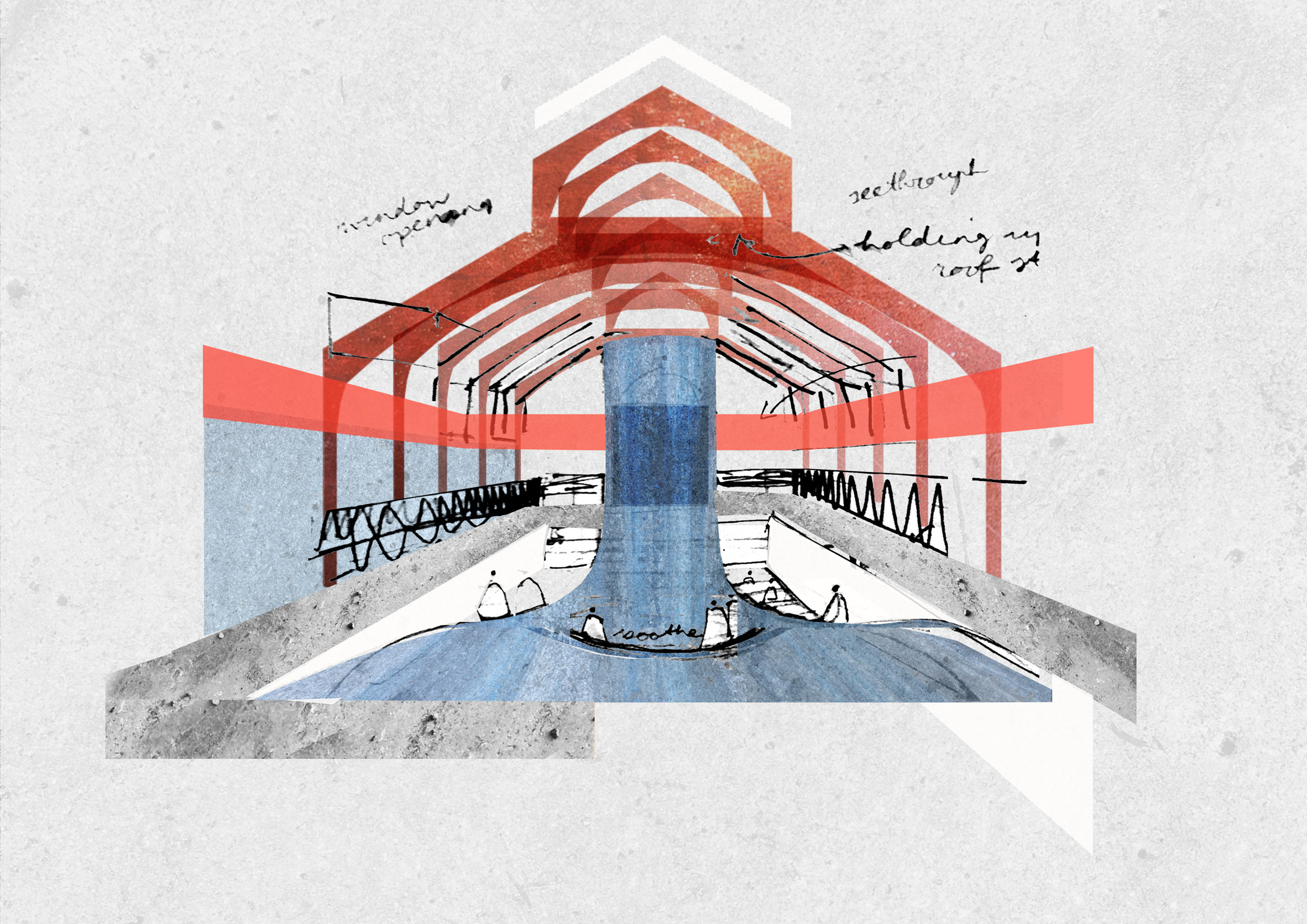
Ashore by Marieke Evans
"Ashore is an intercultural community hub in an abandoned Edwardian bathhouse. It celebrates cultural diversity by bringing people together, providing them with skills and a place to share stories as well as food, workshops, education and performances.
"This adaptive reuse proposal is based on the property of Govanhill Baths in Glasgow and aims to challenge the negative connotations of immigration within the most culturally diverse area of Scotland and an area of urban deprivation. A narrative of sea crossing influences the design and nods to the setting of the public bath while honouring the bravery of refugees, who have crossed dangerous seas to get here.
"The base is cast in plaster, while acrylic interior walls and elevations provide a clear insight into the design. Photography on the walls will serve to provide context and a magazine-style booklet will present the primary and secondary research, development, design and production processes that have influenced the final design."
University: University of Dundee
Course: BDes Interior and Environmental Design
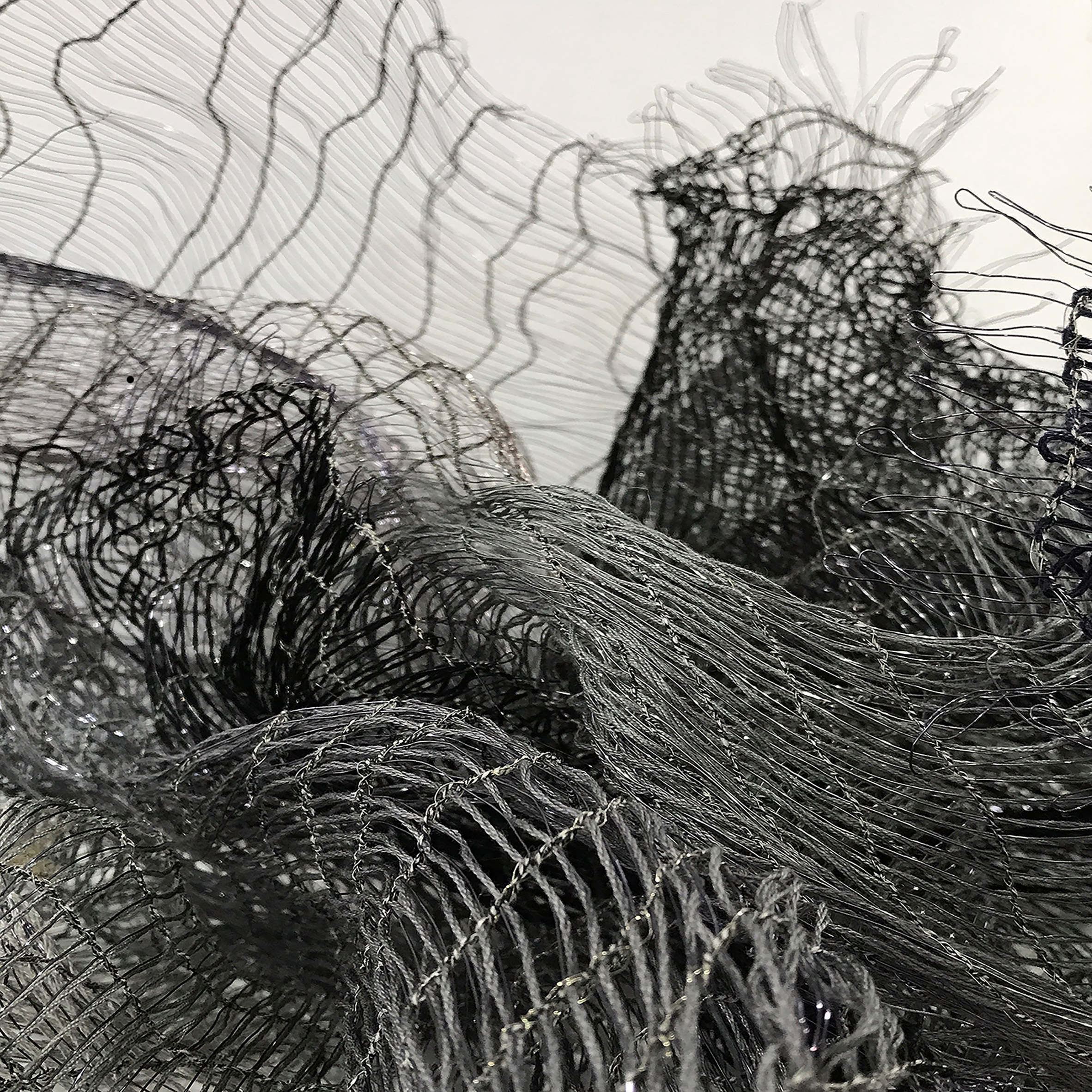
Sublimity by Imogen Mills
"Having swum in seas, rivers and lakes over the winter, I have faced my fear of deep waters and woven a textile installation to explore how sublimity can be achieved both through cold-water swimming and the act of weaving cloth.
"These immersive sculptures are woven in thin wire and cotton, manipulated into forms that highlight the frailty of cloth. The viewer can see each individual piece of thread, allowing them to gain a deeper understanding of how cloth is made.
"I have also articulated my experiences of cold water swimming through an assortment of drawings and prints. In these, I deal with facing my fear of deep waters, which I have held since I was a child, but also talk about the compulsion I feel to get in and swim. This tension is captured in the woven sculptures through the use of scale and colour."
University: Camarthen School of Art
Course: BA Textiles: Knit Weave & Mixed Media
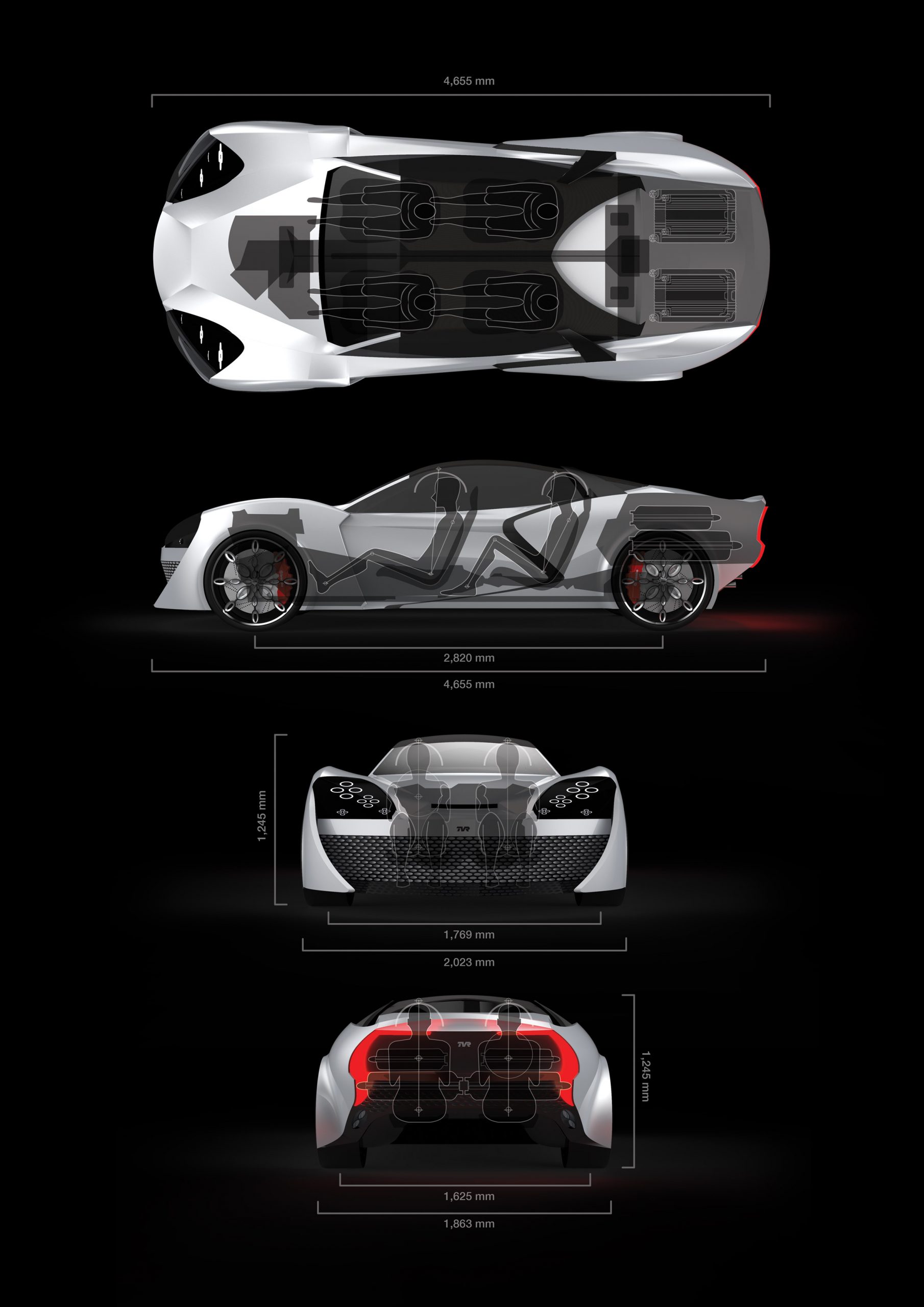
TVR Cynolycus by Sam Warrilow-Pearce
"TVR Cynolycus is a convertible sports car based on the mythical creature of a cynolycus, which features the body of a stag, the neck of a lion, hooves for feet and a bony ridge instead of teeth. A cynolycus is said to imitate the human voice, call men by their name at night and devour those who approach it.
"This new breed of TVR sports car represents the ultimate evolution of the brand and has been designed to encompass the design DNA of its predecessors while offering a glimpse of the future. The four-seater is powered by a four-cylinder hydrogen hybrid engine for enhanced green credentials while maintaining the ultimate driving experience.
"The concept utilises the iStream manufacturing process, developed by Gordon Murray to rethink the way cars are designed, developed and manufactured."
University: Staffordshire University
Course: BA Industrial Design: Product & Transport
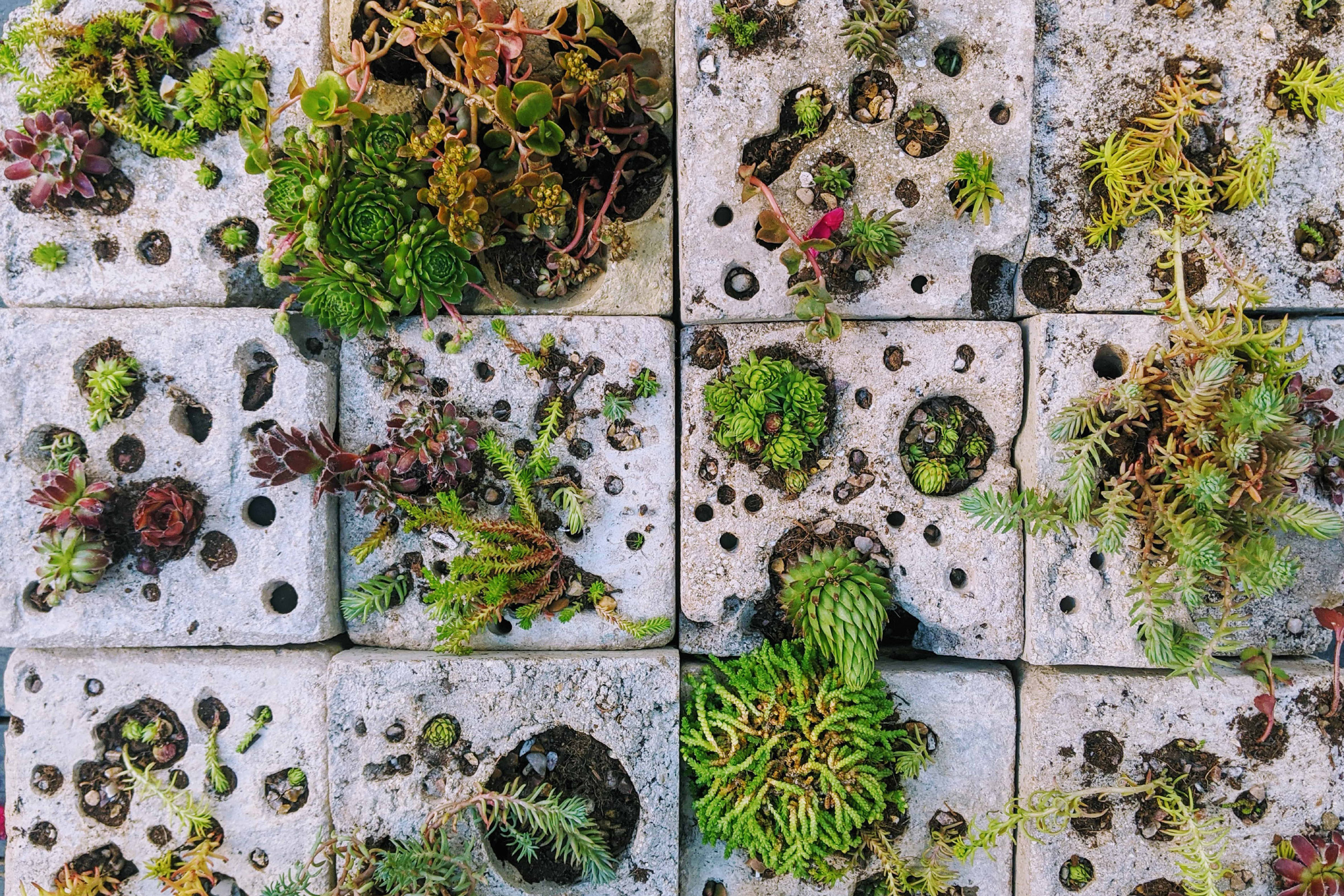
Living Blocks by Lawrence Parent
"Living Blocks is an open-source recipe, which can be used to produce building blocks that can support plant and insect life. Drawing inspiration from the porous structure of limestone formations, living blocks uses waste fruits, vegetables and locally sourced aggregates such as crushed shells, shingle or waste rubble from building sites, to produce a similar porous structure in a cement-based alternative.
"This project explores the ways in which we can build with nature to increase biodiversity in cities while developing our connection to nature. Currently, cities are built with clean, smooth surfaces and spaces, with little focus on natural life. Living blocks aims to provide a basic, open-source process people can use and adapt to build blocks or other shapes that provide complex, textured, bio-receptive surfaces that could provide rich ecosystems in urban spaces.
"Living blocks are made from hypertufa, a cement-based material used to make garden planters. I have repurposed this material and cast it in a process similar to lost-wax casting, but instead of wax my method used tomatoes, ice and balloons to achieve craters, voids and holes that are ideal for hosting urban plants, insects and wildlife."
University: University of Brighton
Course: BSc Product Design
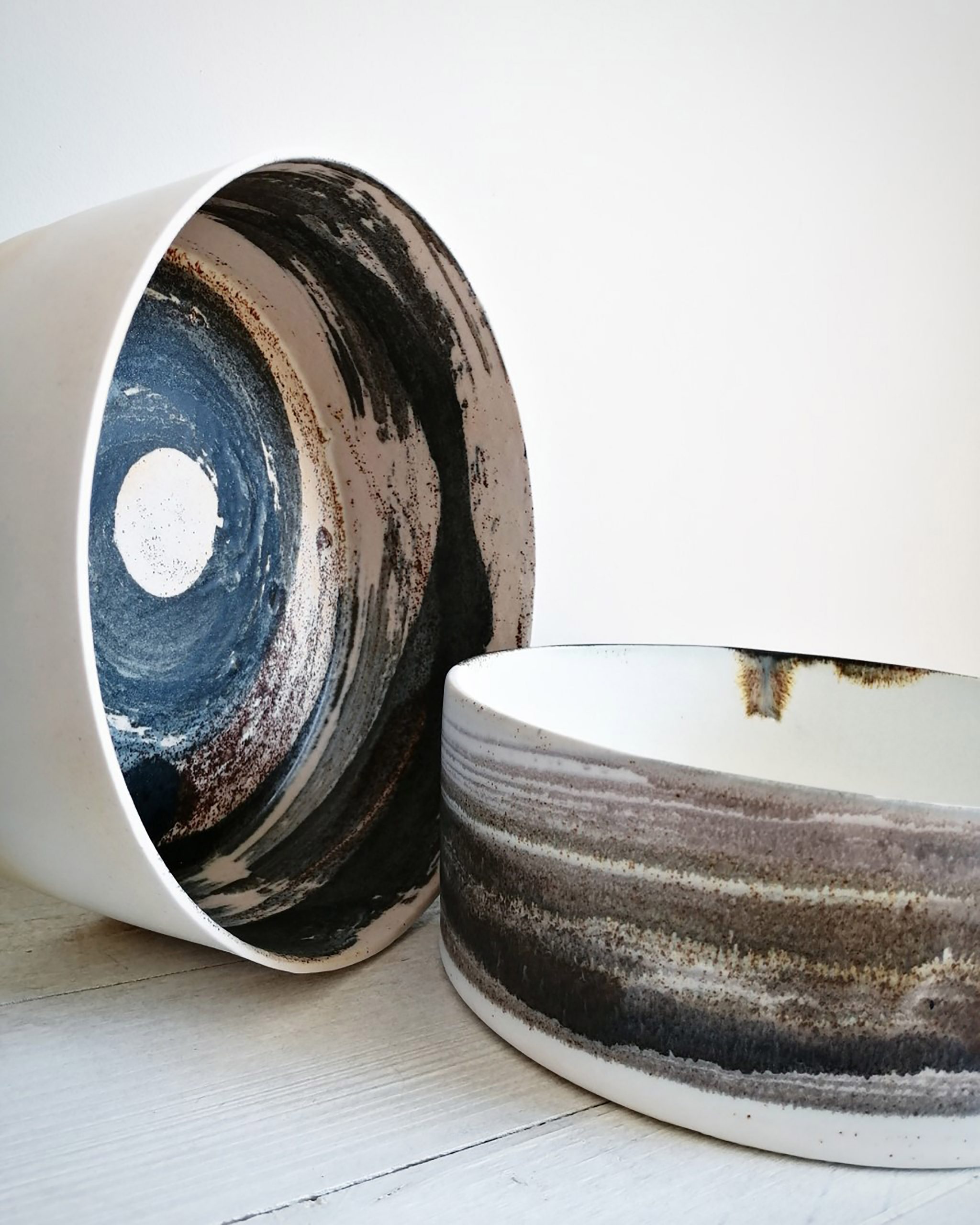
Natural Landscapes by Amy Jackson
"This collection of ceramics explores glaze and application techniques, which take inspiration from the natural world.
"The collection consists of six forms showcasing a variety of landscape-like qualities, derived from countless experimental glaze developments and applications."
University: Staffordshire University
Course: BA 3D Designer Maker
Virtual Design Festival's student and schools initiative offers a simple and affordable platform for student and graduate groups to present their work during the coronavirus pandemic. Click here for more details.
The post Students go back to nature in projects from New Designers graduate show appeared first on Dezeen.
from Dezeen https://ift.tt/3eOcwxG

No comments:
Post a Comment